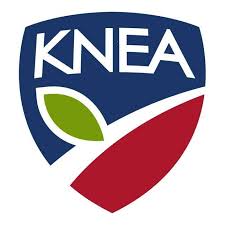By CRISTINA JANNEY
Hays Post
Disputes over wages and insurance led the USD 489 school board to declare impasse in negotiations with teachers Wednesday.
This is the second year in a row the school district and teachers have been unable to come to an agreement.
The district wants to decrease the percentage it pays toward dependent health insurance, which is currently about 83 percent. The district proposed continuing to pay 100 percent for single plans.

Board president and member of the district negotiating team Mike Walker said a recent study commissioned by the school district indicated peer districts are paying 55 percent to 65 percent of teacher dependent insurance premiums.
The district proposed capping the amount the district pays for dependent plans at $1,000. Having a set amount the district pays for dependent insurance rather than a percentage would help the district in setting its annual budget, Walker said.
The district proposed the change in the insurance take affect next year. Teachers would next enroll for benefits as of July 1 at the beginning of the district’s fiscal year. Walker said the district suggested postponing the insurance change to give families an opportunity to evaluate insurance options.

Kim Schneweis, Hays NEA board president and member of the teacher’s negotiating team, said the teachers oppose locking themselves into an agreement on insurance a year in advance. Schneweis said the teachers are not completely opposed to changes in insurance, but they are proposing a committee be formed to further study employee insurance needs.
There is supposed to be a district committee already in place to do just that. However, Schneweis said two of the three teachers who were on the committee have moved out of Hays and the committee is not functioning adequately.
She said some teachers have complained about the district’s switch from the state Blue Cross Blue Shield plan to Aetna. Although several plans with varying deductibles were offered, some teachers ended up with higher deductibles under Aetna, Schneweis said.
“We have had several teachers that have told me personally they have neglected health needs because of the cost of our deductible,” she said.
Other teachers have complained about service under Aetna. Schneweis noted the state recently cited Aetna after doctors and hospitals complained about problems receiving reimbursements through Aetna’s Medicaid plan.
Premiums did not increase for the district this year, she said. The district saved money when it switched to Aetna, but the teachers are not reaping the benefits of that, she said.
Wages
The district also proposed allowing for horizontal and vertical moves on the pay schedule for teachers as well as a flat $1,300 per year pay increase for both teachers and classified staff.
The approximate cost for raises for both certified and classified staff would be $750,000 of the $1.3 million additional funds the district will receive this year from the state.
“Our position on the salary is that they are receiving $1.3 million. It is our ardent statement that they pass this to teachers for salaries in Kansas,” Schneweis said.
Teachers first proposed to increase each cell on the pay schedule by $2,580 per year. That would have brought starting salary for teachers to $40,000 per year. Schneweis noted 80 school districts in the state have $40,000 or more starting pay for teachers.
This is needed to attract and retain quality teachers, she said.
During negotiations, teachers came back with an offer of a $2,000 per year increase for teachers, but as of Wednesday, teachers and the district were still far apart on that number.
Walker said the district wants to give raises to teachers, but it has other issues it needs to address with the additional funds from the state. He said increasing starting teacher pay to $40,000 is a good goal, but the district is going to need more than one year to do that.
The district is also trying to establish a new pay schedule for clerical and secretarial staff, which are below their peers.
The district still doesn’t have the amount recommended for a district of its size in contingency. Walker said that fund could be used to pay salaries in the case of issues with state funding. It is also needed in the case of disasters or major unforeseen facility needs. Last year, the district had to complete significant plumbing repairs at Roosevelt Elementary School. Hays Middle School is undergoing repairs this fall for storm damage the day before school was set to start.
“We need those savings so we can react to big problems, and we may need that to pay salaries down the road,” Walker said.
The textbook fund was also drained during the recession and years after that when budgets were tight for the district.
Schneweis said the outlook for state funding is positive, and she was optimistic teachers will be able to reach an equitable deal in mediation.
“It’s frustrating to us because people worked so hard to get money to schools,” she said. “Hays was one of the founding members of Schools for Fair Funding if you remember years ago when it very first started. It is very disappointing now that we have finally seen the results of these lawsuits, and the legislators have seen the wisdom of funding schools properly that our local school board wants to spend the money elsewhere or add to their contingency reserve, which they have bee adding to quite a bit.
“We really want to see that money put into teacher salaries because that is what that money was intended for. It is not meant to line our pockets,” she said. “It is really meant to shore up the profession of teaching — to attract and retain good teachers — because in the end that is what is best for our students.”
The school board asked school officials to file the impasse paperwork after meeting with teachers Wednesday night. A date has not yet been set to meet with federal mediators.
